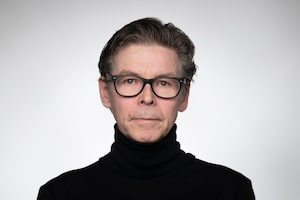
Delegates walk past a giant Jenga-style tower at the COP15 United Nations conference on biodiversity in Montreal, on Dec. 8.Paul Chiasson/The Canadian Press
A reporting system for business risks tied to land and water degradation, biodiversity loss and efforts to reverse them should start gaining traction globally in 2024 and achieve wide adoption relatively quickly, the co-chair of the task force developing it says.
David Craig, co-chair of the new Taskforce on Nature-related Financial Disclosures (TNFD), said the urgency of protecting the world’s natural assets puts pressure on businesses to act to avoid financial and legal trouble. Companies face a host of risks as the natural systems degrade – shoreline loss, floods, deforestation, wildfires – all of which affect assets and markets.
The TNFD aims to have its framework ready by next September, giving companies a new set of tools to assess and disclose their impact on nature and the risks they face in dealing with physical and policy changes.
“The adoption curve of this is going to be pretty quick,” Mr. Craig said in an interview ahead of his visit to the COP15 biodiversity summit in Montreal, where TNFD is hosting a number of events.
“We would hope to see commitment happening in 2024 from a number of companies and financial investors to start adopting the TNFD. I think the interesting question is how fast and how far the regulators go.”
Central banks are starting to factor nature-based risks into their economic stress testing, and some regulators, led by France, have begun setting the stage for companies to report such risks along with those tied to climate, he said.
The TNFD is modelled on the Task Force on Climate-Related Financial Disclosures (TCFD), an extensive measurement and reporting framework. Begun in 2017, it is now the gold standard, with some jurisdictions making its use mandatory.
The task force released a third beta version of its framework in November, and it is being piloted by 130 organizations.
Explainer: What’s on the agenda at the UN’s COP15 nature summit in Montreal?
The group is hoping the market takes the lead in promoting TNFD, so investors have a role in determining how the framework is used before regulators step in, said Mr. Craig, who was previously chief executive officer of Refinitiv, the financial data provider.
There is a lot of financial muscle behind the push, with investors, banks, corporations and market service providers representing more than US$20-trillion in assets involved in its development. That includes 27 members in Canada, including TC Energy Corp., Canadian Imperial Bank of Commerce, Bank of Montreal, Teck Resources Ltd., Agnico Eagle Mines Ltd., Canada Pension Plan Investment Board as well as industry associations and the federal and Quebec governments.
Canada has a “massive natural balance sheet” that is fraught with environmental risks when it comes to the extraction of natural resources, but also opportunities to protect and rebuild natural areas, Mr. Craig said. He is hopeful Canada’s participation in the framework’s development will lead to improvements in how resources are developed.
The TNFD process was launched in 2020 to address the dearth of accurate ways to assess how nature loss affects financial performance or poses long-term risks. A dedicated accounting system allows banks, investors, industrial companies and other organizations to assess such factors in strategic planning, risk management and asset allocation.
More than half the world’s economic output – US$44-trillion of value generation – is dependent on land, water and biodiversity, the task force says. At COP15, negotiators hope to reach an agreement on how to protect 30 per cent of the world’s land and water, as well as hammer out a deal on how to pay for the conservation.
Mark Carney, the former central banker, and billionaire former mayor of New York Michael Bloomberg led the effort to develop the TCFD standards. Besides setting criteria for emissions disclosure, TCFD has requirements for explaining the role of executives in assessing climate risks and how they are integrated into overall corporate risk management. It includes methods for analyzing the potential impact of physical and policy changes given a range of long-term temperature scenarios.
Mr. Carney, who is now the UN special envoy on climate action and finance, has endorsed the TNFD process, as have UN Secretary-General Antonio Guterres and French President Emmanuel Macron.
One goal for the new framework is to avoid making it too onerous, as companies also have to devote resources to climate-related disclosure, Mr. Craig said. It will require some new skills that depend partly on what a company does and where its operations are. The pilot programs will help determine how much extra effort is required. Many participants have asked for more sector-specific guidance, for example. “So it does take effort. There is going to be a learning curve,” he said.
A few members, including Axa SA, the French insurer, and Kirin Holdings Co., the Japanese beverage company, are experimenting with combining TNFD and TCFD into a single framework.
The two issues are intertwined, so such efforts make sense, Mr. Craig said. For instance, the carbon credit market, where emitters look to offset their greenhouse gases, frequently involves investments to protect ecosystems so they can keep acting as carbon sinks.
 Jeffrey Jones
Jeffrey Jones